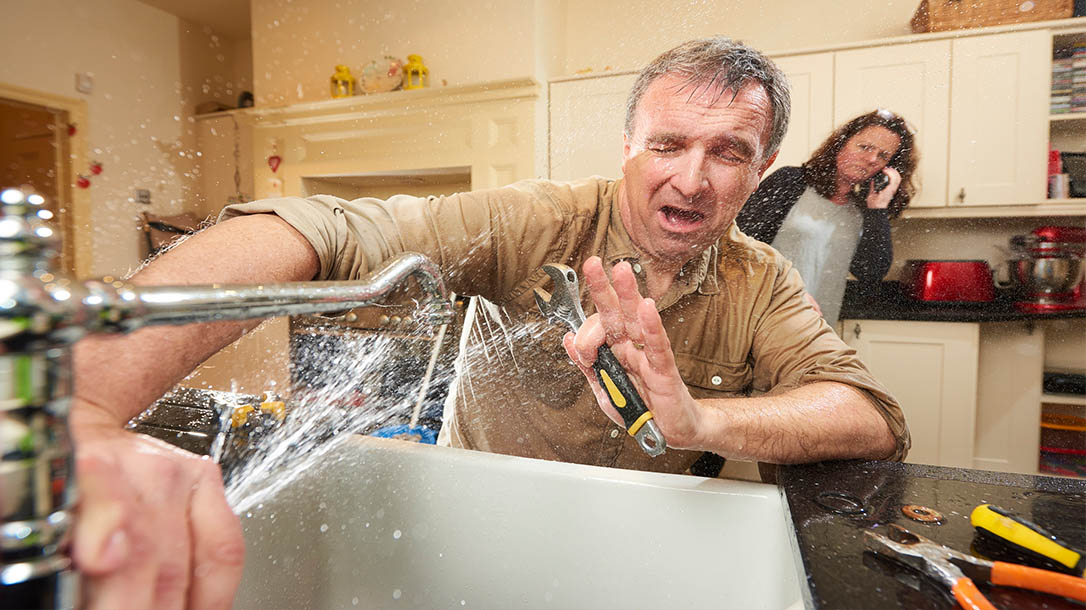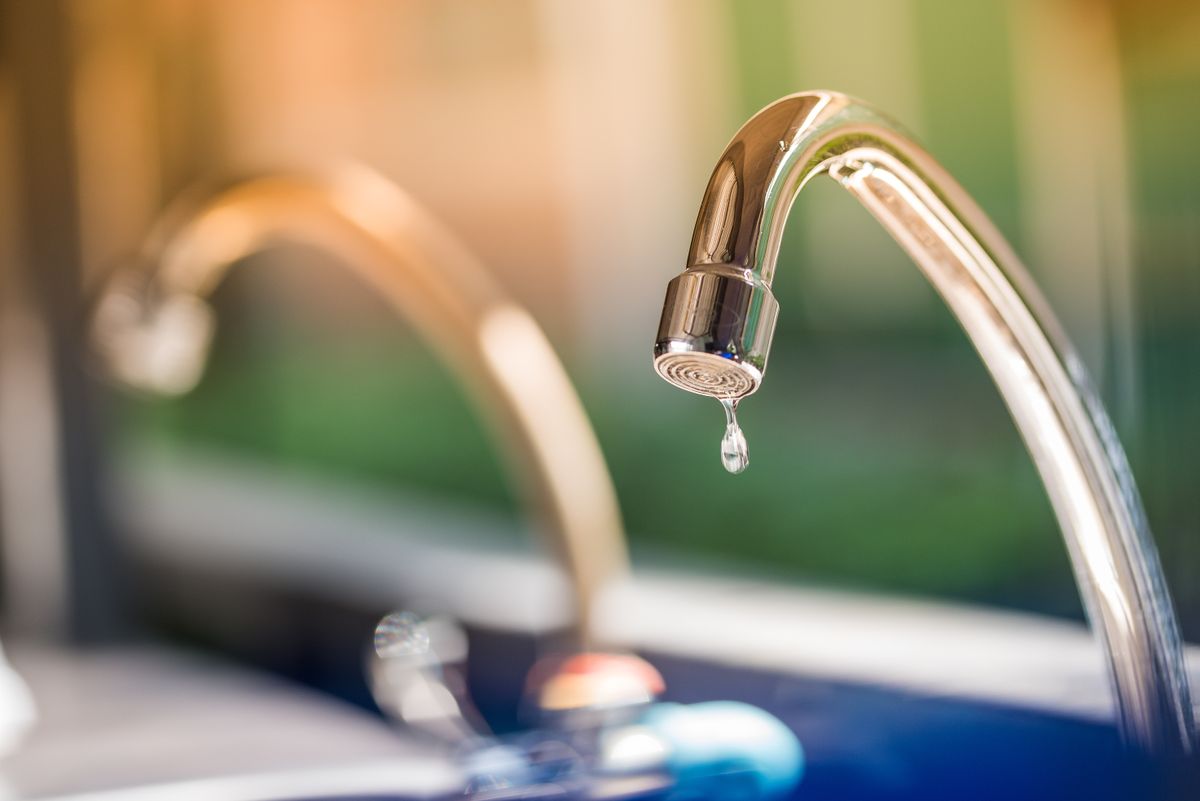Exploring the Value of Resolving a Faulty Faucet
Exploring the Value of Resolving a Faulty Faucet
Blog Article
Just how do you feel on the subject of Why It's Important to Fix Leaky Faucets?

Trickling taps could seem like a minor inconvenience, but their influence exceeds just the nuisance of the noise. From wasting water to incurring unneeded monetary expenses and health threats, overlooking a leaking tap can cause various effects. In this post, we'll delve into why it's crucial to resolve this common family issue without delay and efficiently.
Wastefulness of Water
Ecological Effect
Trickling faucets add significantly to water wastefulness. According to the Environmental Protection Agency (EPA), a solitary tap leaking at one drip per secondly can lose more than 3,000 gallons of water per year. This not only strains water sources however likewise affects ecosystems and wild animals dependent on them.
Financial Prices
Raised Water Expenses
Beyond the ecological impact, trickling faucets can pump up water bills considerably. The built up wastefulness in time equates right into greater energy costs, which can have been prevented with prompt repair work.
Potential Property Damages
Moreover, prolonged trickling can bring about harm to components and surfaces bordering the tap. Water buildup can trigger staining, rust, and also architectural issues if left ignored, resulting in extra repair prices.
Health and wellness Problems
Mold and Mold Development
The consistent existence of dampness from a trickling tap creates an ideal atmosphere for mold and mildew development. These fungi not only endanger indoor air high quality yet likewise pose wellness risks, especially for people with respiratory conditions or allergic reactions.
Waterborne Conditions
Stagnant water in trickling taps can become a breeding place for germs and various other microorganisms, raising the danger of waterborne conditions. Contaminants such as Legionella germs grow in stationary water, possibly leading to severe ailments when ingested or inhaled.
DIY vs. Expert Fixing
Advantages and disadvantages of Do It Yourself Repair Service
While some might attempt to repair a dripping faucet themselves, DIY repair services come with their own set of obstacles. Without correct understanding and devices, do it yourself attempts can exacerbate the concern or result in insufficient repair services, prolonging the problem.
Benefits of Hiring a Specialist Plumber
Hiring a specialist plumber guarantees that the underlying source of the trickling faucet is attended to properly. Plumbing professionals possess the expertise and devices to detect and repair faucet concerns successfully, saving time and reducing the danger of more damages.
Step-by-Step Overview to Repairing a Dripping Tap
Tools Needed
Before attempting to take care of a leaking tap, collect the essential tools, including an adjustable wrench, screwdrivers, replacement parts (such as washing machines or cartridges), and plumber's tape.
Typical Faucet Issues and Their Solutions
Recognize the kind of tap and the certain issue triggering the drip. Typical troubles consist of worn-out washing machines, rusty valve seats, or faulty O-rings. Refer to producer directions or on-line tutorials for step-by-step support on repairs.
Preventive Measures
Routine Upkeep Tips
To stop dripping faucets, do regular maintenance such as cleaning aerators, inspecting for leaks, and changing worn-out components quickly. Furthermore, take into consideration setting up water-saving devices or upgrading to a lot more reliable components.
Relevance of Prompt Fixes
Dealing with dripping taps as soon as they're seen protects against additional water wastefulness and potential damage, inevitably saving both water and money in the long run.
Influence On Property Worth
Understanding of Well-Maintained Residential Or Commercial Property
Keeping a building in good condition, including dealing with upkeep problems like trickling faucets, enhances its perceived worth and value amongst possible buyers or lessees.
Influence on Resale Worth
Qualities with well-kept plumbing fixtures, consisting of taps, command higher resale worths in the realty market. Addressing leaking faucets can add to a positive impression throughout home assessments and settlements.
Environmental Responsibility
Individual Contribution to Preservation
Taking duty for taking care of trickling taps straightens with wider efforts toward water conservation and ecological sustainability. Every person's actions jointly make a substantial effect on preserving priceless sources.
Sustainable Living Practices
By focusing on prompt fixings and embracing water-saving habits, people add to sustainable living techniques that benefit both existing and future generations.
Verdict
Addressing a leaking tap goes beyond simple convenience; it's a necessary action toward saving water, minimizing economic costs, and protecting health and residential property. Whether via DIY repairs or professional support, acting to take care of leaking taps is a little yet impactful method to promote accountable stewardship of sources and contribute to a healthier, more lasting future.
How to Fix a Leaky Faucet: Step-by-Step Repair Guide
A leaky faucet may seem like a simple annoyance, but if it's not fixed promptly, that leak could cost hundreds to potentially thousands. From water damage to mold, mildew, and high water bills, even a tiny leak can be catastrophic if left unattended. Damage like this can even affect the overall value of your home, so it's important to take the right approach for leaky faucet repair. You may need the help of a plumber in some cases, but we've got a few tips you can try on how to fix a leaky faucet before calling the pros.
Four Faucet Types
When you're learning how to fix a leaky faucet, the first step is knowing what kind of faucet you're working with! There are four common types.
Cartridge Faucets
Cartridge faucets come in one- or two-handled varieties. In one-handled cartridge faucets, hot and cold water combines in a single cartridge. In the two-handled versions, hot and cold water are controlled separately and mixed in the faucet.
Ball Faucets
Ball faucets have a single lever you push up and down to adjust the pressure and rotate to change the temperature. A slotted metal ball controls the amount of water allowed into the spout.
Compression Washer Faucets
They're the oldest type of faucet, but they're still used in many homes — especially older ones. Compression faucets have two separate handles that, when turned, raise or lower the washer that seals a water valve. This valve stops water from flowing through the faucet when it is turned off.
Disc Faucets
Disc faucets rarely need to be repaired due to their maintenance-free design. The water flow is controlled by two discs — the upper one raises and lowers against a fixed lower disc, creating a watertight seal. If your disc faucet starts leaking, you may need to replace the seals or clean residue buildup from the inlets.
Fixing a Leaky Faucet
Step 1: Turn Off the Water
Whether you're learning how to fix a leaky bathtub faucet or how to fix a leaky kitchen faucet, always turn off the water supply to your working area when you're fixing a leak. The last thing you want is a flood added to your list of things to fix.
Look for the shutoff valves below your sink or around the tub and turn them clockwise to stop the water flow. If your faucet doesn't have shutoff valves, you may need to turn off the water for the whole house. Check to make sure it's off by turning the faucet on. If nothing comes out, you're ready to start the repair.
Step 2: Take Apart the Faucet
How you disassemble your faucet depends on the type of fixture you have. You can use a flathead screwdriver to remove the caps on top of the handle or handles for cartridge and compression faucets. Inside, you should see handle screws. Unscrew these with a screwdriver to remove the handle.
Disc- and ball-style faucets will typically have an inlet screw near the handle, and removing that will reveal the interior of the faucet.
Detach the Valve Stem
For cartridge- and compression-style faucets, you'll see the inner valve stem or cartridge once you remove the faucet handles. If you have a compression faucet, unscrew the brass valve stem. If you have a cartridge faucet, pull out the cartridge. If your cartridge has been in place for a while, it may require some tools or extra force to remove it due to mineral deposits.
Examine and Replace Parts
Once you've removed the parts, check them out to confirm what needs to be replaced. You may see corroded rubber washers, O-rings, stems, or cartridges. On a ball-style faucet, check the seats and springs for damage.
If you need to repair a leaky disc faucet, check the inlet and seals on the lower disc.
Once you determine what parts must be replaced, visit your local hardware store. Bring the damaged parts with you to ensure you can purchase the correct components to replace them.
Clean Valves and Faucet Cavity
If you've removed a stem or cartridge, you may notice mineral buildup in the faucet's threads. Use white vinegar to clean the valve seat by soaking it for a few minutes, then scrub it away with a soft toothbrush and rinse with warm water. You can also clean the interior of the faucet in the same way.
Reassemble the Faucet
Once your faucet is cleaned and the required parts have been replaced, it's time to reassemble it. Put the pieces back together and slowly turn the water supply back on. Doing this slowly is crucial because too much initial water pressure can damage the new hardware you've just installed.
https://homewarranty.firstam.com/blog/how-to-fix-leaky-faucet

Hopefully you enjoyed reading our article on . Thanks so much for taking a few minutes to browse our blog post. In case you liked our article please don't forget to pass it around. Bless you for your time. Kindly pay a visit to our blog back soon.
Report this page